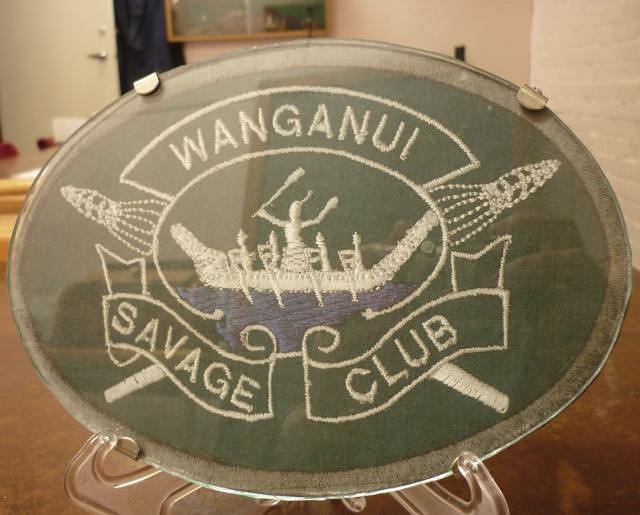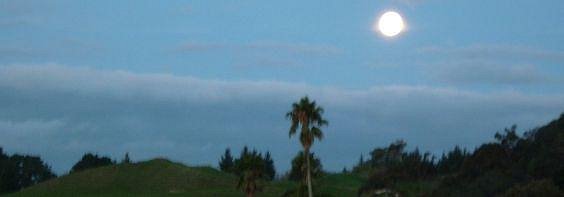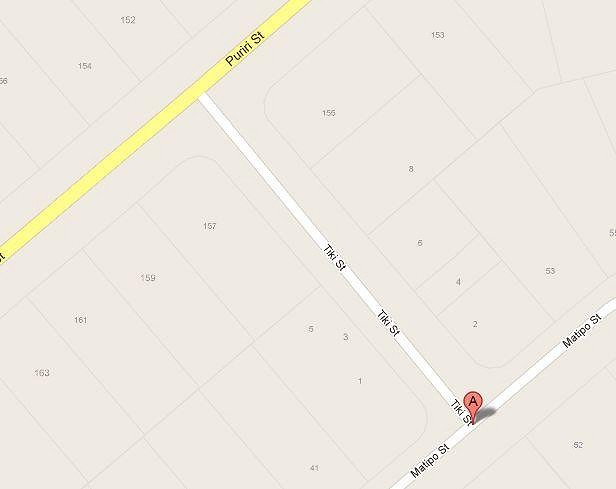Tiki Central / Tiki Travel
Wanganui: The Tiki Tour
|
CN
Club Nouméa
Posted
posted
on
Tue, Nov 15, 2011 1:16 AM
Hello Paipo, It is true I have not swept anything under the carpet about the Wanganui Savage Club (quite the contrary). As you say, it is what it is, but Napier is Napier, and Wanganui is Wanganui/Whanganui/Petrie whatever... I'm not sure what is "heavy-handed" in my message, and censorship is a big word to use when I was merely informing you of the negative spin-offs that image could have. Maybe you could set up a separate thread for the other branches, which was what I was intending to do with the Manawatu Savage Club stuff anyway. CN |
|
B
bigbrotiki
Posted
posted
on
Tue, Nov 15, 2011 10:09 AM
Guys, guys, relax! Paipo: CN had no intention to censor anything, he was just being cautious - a bit overly cautious, maybe. But I don't see his post as a put down of yours. CN: I feel that this kind of fear of political incorrectness would amount to self-censorship here. If anyone would abuse this image for their agenda, they should be easily defeated in their reverse-racism. The fact is that that is one fascinating pendant, as fascinating as anything relating to cannibalism from ANY culture is. It was created out of that age-old fascination back in the day, and not to offend anybody. We should be able to look at things from the past and discuss them like adults. And it has a place here because it relates directly to the history of the Savage clubs. These kind of cross-references are what makes Tiki Central interesting and educational. That said, I agree with you that further info about all the other Savage Clubs should be put into a separate post, as this one might get too big. :) |
|
CN
Club Nouméa
Posted
posted
on
Tue, Nov 15, 2011 4:02 PM
This thread is the only on-line source of any substance regarding the Wanganui Savage Club, and consequently local people here are aware of it. Throughout my coverage of the Wanganui Savage Club I have endeavoured to provide appropriate historical background, and put things in context, as I am aware of the way people tend to view the past through the prism of the values of the present. Wanganui is a town where people have long memories and you need to tread carefully and tactfully (see, for example, my earlier coverage of the Moutua Gardens occupation). There is a racial element to the Wanganui Savage Club's past that very easily lends itself to highly-charged debate and slanging matches. Appending that image to a thread devoted to Wanganui, without providing any background or context concerning its origins is, at best, misleading. Also, offering an image of an unsourced object that actually comes from Napier as a reason why the Wanganui Savage Club Hall may not be recognised as a historic place is unfounded. Setting aside the Savage Club's presence there since 1928, the building itself is of historic worth, as it was Wanganui's original museum building and dates from the 1890s. So that's why I wasn't happy to see that image pop up in this context, and I would be relieved if it could be moved to another more general thread concerning the Savage Clubs elsewhere. CN
[ Edited by: Club Nouméa 2011-11-15 16:03 ] [ Edited by: Club Nouméa 2011-11-15 17:51 ] [ Edited by: Club Nouméa 2011-11-19 15:30 ] |
|
B
bigbrotiki
Posted
posted
on
Tue, Nov 15, 2011 9:01 PM
Hmmm, got a point there, well put. My general principles about pc-ness fears aside, there is no point in alienating the locals. I agree with CN on this in this case. |
|
CN
Club Nouméa
Posted
posted
on
Sat, Nov 19, 2011 4:24 PM
Part 13: The Wanganui Savage Club Hall's Original Décor Judging from this article, there used to be a lot more internal fittings in the Wanganui Savage Club Hall than there are now. While all the paintings etc. on the walls remain, among other things, the nine whares created in the bays along the sides of the hall in the early 1930s and described in the following newspaper article are no longer there. It is interesting too to see from this article that the whole spirit of the hall was intended as a respectful tribute to the Maori and their culture... CN The Wanganui Chronicle, Saturday 25 March 1933 A NOVEL HOME WANGANUI SAVAGE CLUB A SIGHTSEER'S IMPRESSIONS HISTORY BLENDS WITH PURPOSE Co-operative effort, stimulated by a touch of originality and the knowledge of a great race will, in some measure, be preserved, has created for the Wanganui Savage Club a new and novel home in the old museum buildings. Going within is like stepping out of the world of to-day, from a setting typically English, to a scene from the far-away days of Captain Cook. Without, English plane trees, just before the fall, wave indifferent, dropping leaves over concrete steps and among wires charged with that new man-mastered agency - electricity. Within, New Zealand ever-greens surround a typical native pa, with its meeting-house, or marae, in the distance and its wharepunis in rows down the side. Even the emblematic tui, and the kaka, have not been forgotten, and in leafy branches above weird figures that guard the entrance to the marae, these birds are shown in realistic attitude, just as they must have appeared when the very first of the Maori race set foot on the shores of the Long White Cloud. Just inside the folding doors that give entrance from the street, the sightseer is greeted with the outer defences of a great Maori pa, complete even to the tongue-displayed figure which guards the gateway. Beyond that gateway is the pa itself. The marae, majestic in its historical associations, occupies the full width of the room at the far end. Three carvings, one at each side, and the third erected at the apex of the facade, and looking down on all who might come within the gateway of the pa, link this new home with a famous house at Tieke, on the Wanganui River. Each figure represents a personage whose mana is just as great to-day as it was when the Maori held uninterrupted sway in the Valley of the Whanganui. Punga ferns, neatly cut, [and] well designed water colour effects, which display typical native trees, provide a background for the marae, and a curtain, in colours of blue and black, emblematical of Wanganui, and bearing the Savage Club’s badge, has been introduced. Its presence indicates the union of the two races. In other words, the marae is a stage, just as it was in the days of old, when the rangitiras of the tribe gathered to the korero and manifestations of loyalty were made. Nine whares have been created from the nine bays that are peculiar to the architecture of the hall, and in each the endeavour of the creators has been to preserve a Maori setting. The whare on the right of the stage is that of the heketari and tohangas of the tribe and it will carry his insignia above its apex. Three other whares on the same side are dedicated, respectively, to the Auckland, Masterton and Christchurch Savage Clubs. On the opposite side and next to the stage, is located the whare of the ariki and rangitira, and in the same row are whares that will be dedicated to Napier, Hawera, Gisborne and Poneke (Wellington). Above each has been painted trees and shrubs of the New Zealand forest. Naturally there had to be totaras above the whare of the ariki, but ratas, rimus, the pohutakawa, even the beautiful flowering clematis, have all found a place. Badges of those clubs to which the whares are to be dedicated will be placed above each facade in the settings of scrolls. Each whare, with a cluster of toe-toe on the one side and raupo reeds on the other, will have two specially erected punga seats at the entrance and within there will be seating accommodation for 12. So that members of the tribe may provide fitting korero music, a special enclosure has been provided, ringed with punga trunks suitably scrolled. All this presents an imposing sight from the entrance, but on reaching the marae and looking back one is greeted with the outlook from within the pa, and it is just as imposing. Strong pointed shafts of the stockade fringe the lower portion up to a height of several feet. Above is the look-out point and beyond the sky and the bush. Clear cut in the centre is the gateway. Undoubtedly this new home of the Wanganui Savage Club does its tribesmen credit. Away back in that distant past, out of which an inspiration to create anew has come, these warriors, under the guidance of Ariki Dr George Adams, have unconsciously developed one of the finest characteristics of the Maori race – loyalty to a leader and a cause. Just as it was in the days of noted chieftains and tribal conference, so can it be to-day. Material has had to be bought to build this novel setting, but labour has been entirely voluntary. More than that, it has been so directed and so applied that one would really believe that these tribesmen of the Wanganui Savage Club have within them strange ancestral chords that have sprung to life. On March 20 there is to be much korero, joy, feasting and dancing when the new pa will be opened and the marae and wharepunis dedicated. His Worship the Mayor (Mr. N. G. Armstrong) is to declare the hall open. Mr. Ifekonui Whakarake, grandson of an early chief of the river district, is to specially dedicate the marae and wharepunis to the Wanganui Savage Club. Mr Hope Gibbons is to speak on behalf of the Alexander Museum Trustees and each whare will be dedicated to the representatives of distant units present. By that time it is believed that the club will have a full membership – 250. It is well up to 200 now, and on April 8 a special korero is to be held at which 150 new members will be initiated. This will probably be a record for an old-established club. Dressing rooms, a library, a well fitted supper-room and adequate stage dressing rooms have been provided in the general lay-out and indications point to many happy koreros resulting in ideal surroundings. Other activities to be fostered by the club include Badminton, for which an up-to-date court had been provided. A literary and debating society will retain the interest of members during the winter season and will encourage the study of desirable, if controversial, subjects. Night after night, several keen voluntary workers have operated until the small hours of the morning, building, little by little, with that infinite patience characteristic of the Maori, a model pa that will be the first of its kind in New Zealand and a monument to the co-operative spirit that is steadily lifting Wanganui to the high plane to which it rightfully belongs – “Whakatane Kia Kaha” (Quit You Like Men. Be Strong!)
[ Edited by: Club Nouméa 2011-11-19 16:27 ] [ Edited by: Club Nouméa 2011-11-19 16:34 ] |
|
T

TikiTomD
Posted
posted
on
Sat, Nov 19, 2011 4:55 PM
CN, I look forward to each each installment you make on the Wanganui Savage Club. Many thanks for taking the time to do this. It's a real treat for the mind and the eyes. -Tom |
|
CN
Club Nouméa
Posted
posted
on
Tue, Nov 22, 2011 3:39 PM
Thanks Tom, It has been a fascinating journey for me too; realising that, at a time when British culture enjoyed overwhelming dominance in New Zealand, there were Pakehas in New Zealand who nonetheless took an active interest in Maori culture and integrated it into their cultural and social lives. And, in the course of my research, I get to find out about stuff like this: During WWI, the Wanganui Savage Club went into mothballs, as most of its members were overseas getting shot, shelled and gassed. In its absence, various local men decided to entertain themselves by forming the Swankers Club. I have a badly photocopied photo of 2 of them, dressed like Edwardian dandies, wearing rosettes, puffing a cigar and a pipe respectively, with their hats on their heads at very jaunty angles. Among other things, they raised funds for the war effort by setting up a tent with "The Wild Man of Borneo" inside it, and charging admission: "There, down a hole about six feet deep, wire netting over the, padding about on straw, was the "Wild Man". You went inside the tent and saw him there, roaring and growling, a false set of teeth made by some Swanker dentist giving him a dangerous look, and some artificial arms adding to his gorilla-like appearance." In reality, he was a fellow known as "Shamrock", who ran a fish barrow on Victoria Avenue (the main street). CN |
|
CN
Club Nouméa
Posted
posted
on
Sun, May 20, 2012 6:49 PM
Hmm, look at this street name in the suburb of Castlecliff:
My only excuses for not knowing about Tiki Street earlier are that I live on the other side of town, and it's not a major street...
[ Edited by: Club Nouméa 2012-05-29 02:23 ] |



